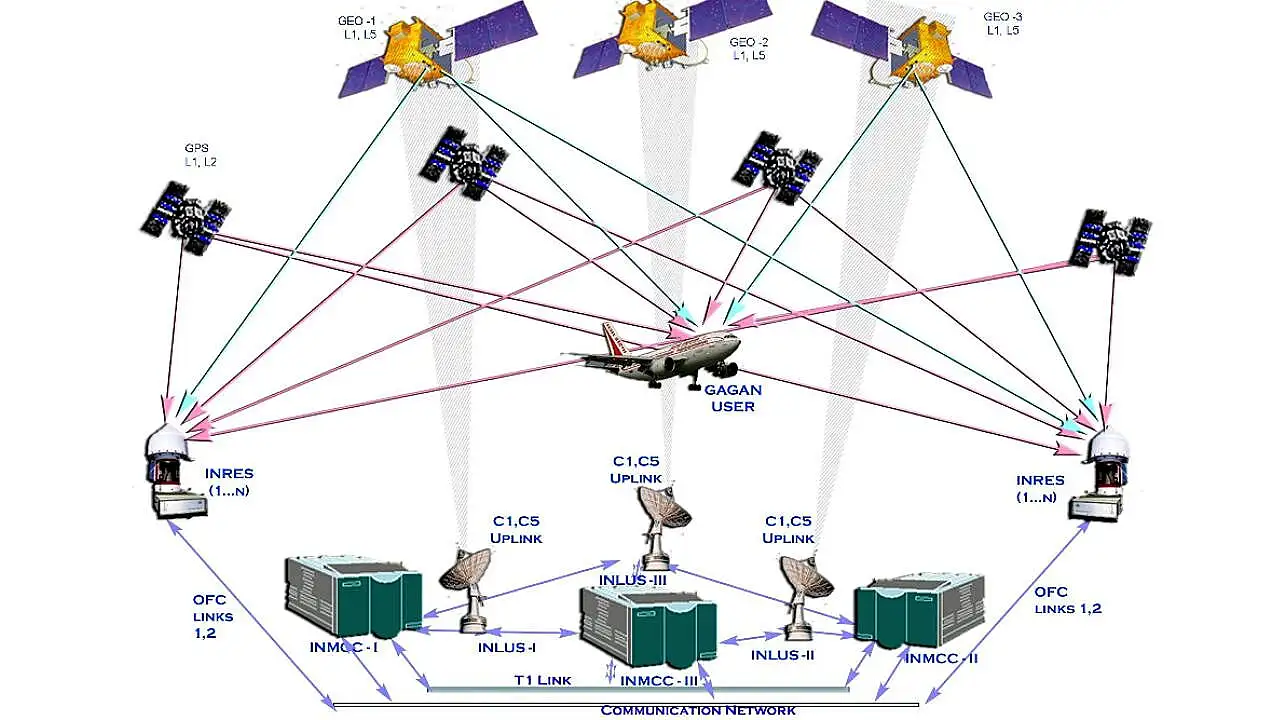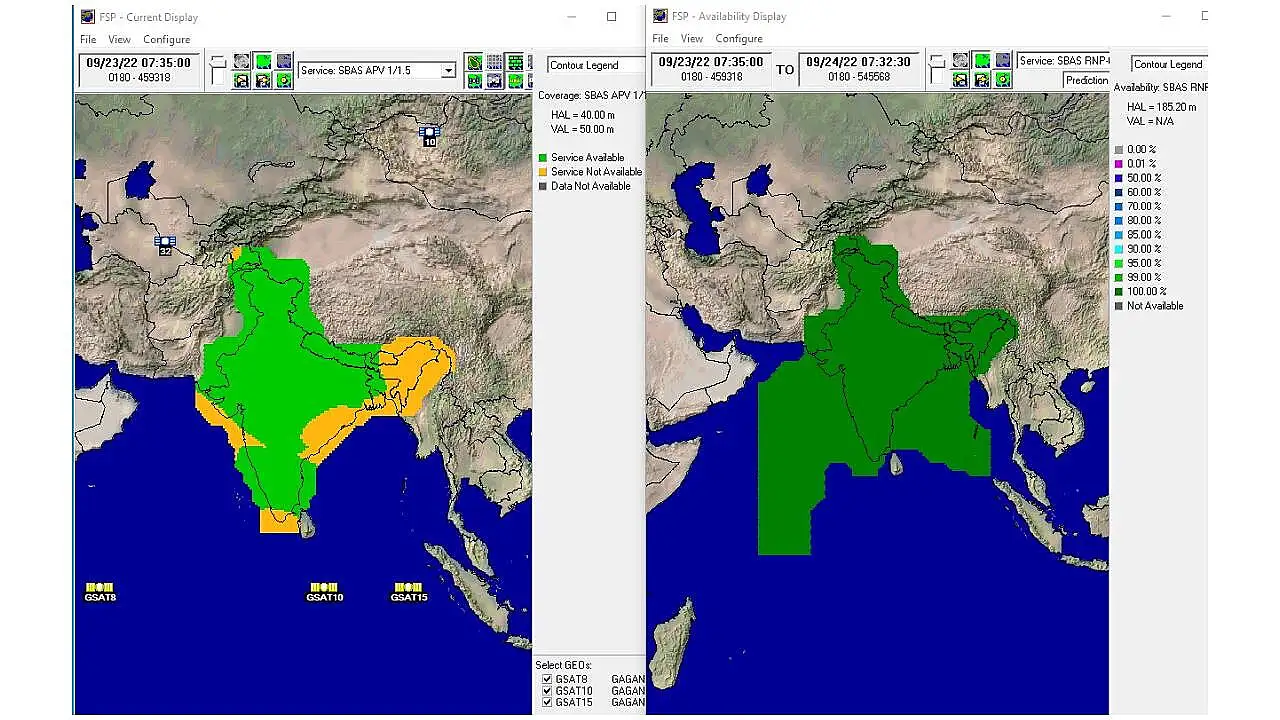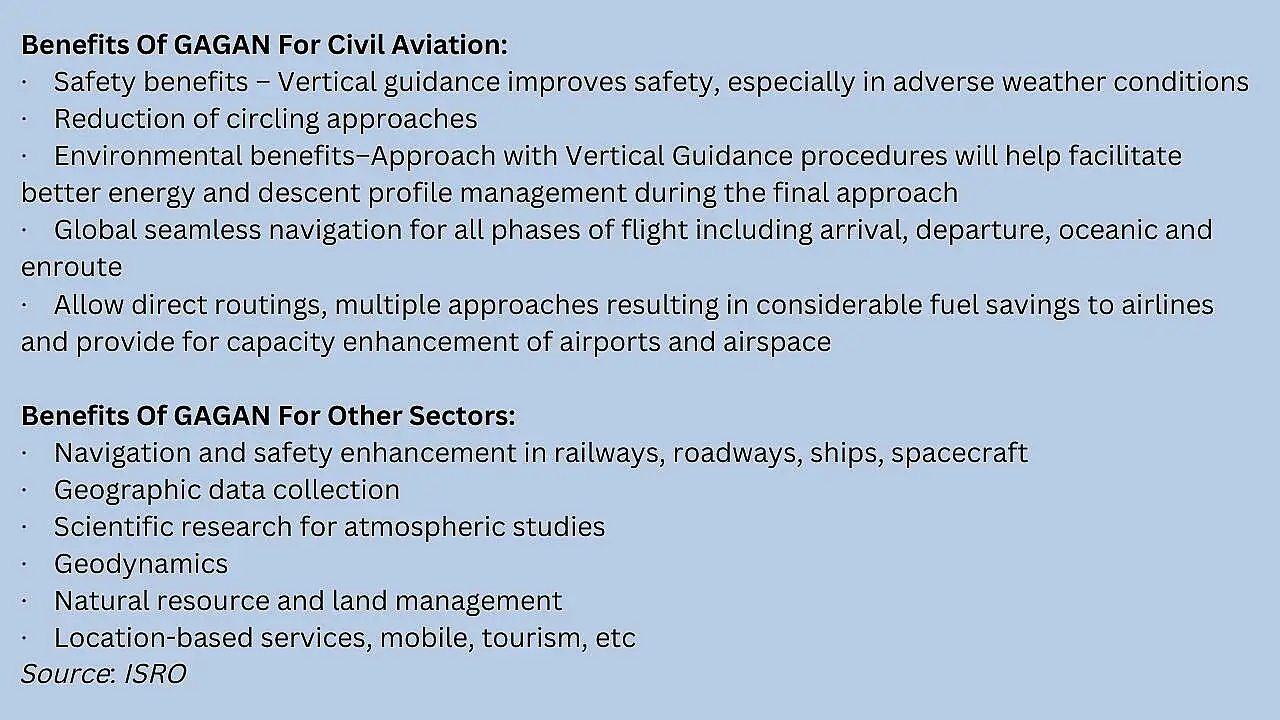
India’s leading airline, IndiGo, will equip its 280+ aircraft fleet with the indigenous GPS Aided Geo Augmented Navigation (GAGAN) Global Positioning System (GPS). The Directorate General of Civil Aviation (DGCA), had issued a mandate last year that all aircraft registered in India after July 1, 2021, would have to be fitted with GAGAN-enabled GPS receivers. When fully integrated into India’s civil aviation sector, GAGAN will modernise airspace management, reduce flight delays, save fuel, and improve flight safety.
“Our ATR fleet is ready to fly GAGAN-based Localiser Performance with Vertical Guidance (LPV) approaches. We are working with our suppliers to start equipping our A320 family fleet in coming months,” an IndiGo spokesperson told Mobility Outlook. Using Gagan, pilots need not take a circuitous, non-precise approach to land.
According to the spokesperson, installing Gagan-enabled GPS receivers will enhance the positional accuracy of its aircraft and help its pilots fly precision approaches to airports, reducing landing minimums. “Gagan is augmenting and adding more precision by correcting the errors which are inherent to existing GPS satellites. The accuracy provided by GAGAN is as good as that offered by the Ground-based Instrument Landing System (ILS), which guides pilots to make precise landings at major airports. At smaller airports, where ILS is not available, GAGAN-enabled approaches can be used for landing guidance,” the spokesperson said.

First Off The Block
IndiGo made the trial flight of its first aircraft fitted with a Gagan GPS system in April. It made the trial flight using an ATR aircraft, which did not require any modifications. The airline began planning for the trial flight in mid-2021 with the Airports Authority of India (AAI) designing the full approach procedures. Following this IndiGo began training its pilots after receiving approval from the DGCA and in mid April, successfully carried out simulator checks to assess its capabilities. IndiGo has a fleet of over 280 Airbus A320 family jetliners and ATR regional transport aircraft, which operate on more than 1600 daily flights in 73 domestic destinations.
“Our fleet is technologically advanced, and GAGAN enabled receivers are installed in all aircraft being registered since July 1, 2021.” IndiGo’s technical team added a coded navigation database to the aircraft’s navigation system to enable it to fly the approach to Kishangarh airport in Rajasthan. Before the test flight, IndiGo sent its operations teams to the airport to undertake feasibility checks and a detailed safety risk assessment to mitigate any risk.
Commenting on the future roadmap for integrating Gagan GPS receivers, the spokesperson said that aircraft fitted with the receivers would be able to land precisely at Tier-2 and Tier-3 airports using the accurate data. This will reduce infrastructure development costs at airports as otherwise, they would need to install expensive ILS equipment, which are imported.
Indigenous GPS
GAGAN is a Satellite Based Augmentation System (SBAS) developed for Indian airspace by the Indian Space Research Organisation (ISRO) and AAI. The objective was to establish, deploy and certify a satellite-based augmentation system for safety-of-life civil aviation applications in India and provide the best possible navigational services over the Indian Flight Information Region (FIR).
The indigenously developed GPS network comprises a system of satellites and ground stations that provide GPS signal corrections, providing better position accuracy. GAGAN corrects GPS signal errors caused by Ionospheric disturbances, timing and satellite orbit errors. GAGAN is the first SBAS system in the world to serve the equatorial region, and India is the third country to access such precision approach capabilities.
The GAGAN system provides Non-Precision Approach (NPA) services, which are accurate within the radius of 1/10th of a nautical mile and Required Navigation Performance (RNP-0.1) over the Indian FIR. It can also provide a precision approach with Vertical Guidance (APV-1.0) over the Indian landmass on nominal days. The DGCA certified GAGAN for enroute operations (RNP 0.1) in December 2013 and for precision approach services (APV 1) in April 2015.

GAGAN provides augmented information for the GPS receivers to enhance the accuracy and reliability of position estimates. Its architecture comprises a ground segment and a space segment. The ground segments, spread across India, comprise approximately 15 reference stations and three master control centres. The GPS information collected by these 15 reference stations is forwarded by terrestrial or satellite communication network to the Indian Mission Control Centre (INMCC), responsible for providing distress alerting services to National Aeronautical and Maritime Rescue Coordination Centres.
At INMCC, the GPS information is processed, and correction (augmentation) messages are generated. These are sent to the Indian Land Uplink Station (INLUS), which further uplinks them to three geostationary communication satellites GSAT-8, GSAT-10 and GSAT-15. These satellites broadcast these correction messages on a GPS-like signal.
The GAGAN system is interoperable with other international SBAS systems, such as the US Wide Area Augmentation System (WAAS), the European Geostationary Navigation Overlay Service (EGNOS) and the Japanese MTSAT Satellite Augmentation System (MSAS). It provides seamless air navigation across regional boundaries. The GAGAN system has the capability to cater to 45 reference stations for expansion to neighbouring countries. Its present footprint extends from Africa to Australia.